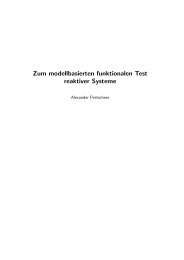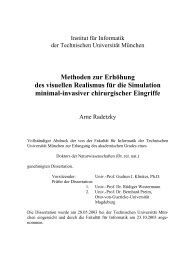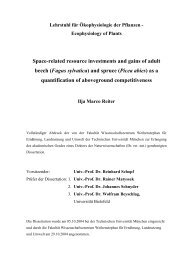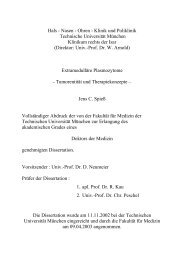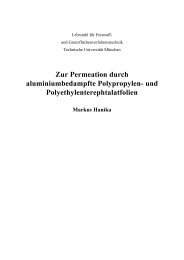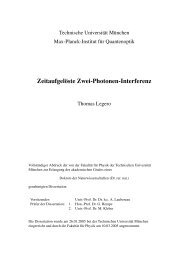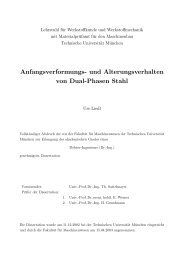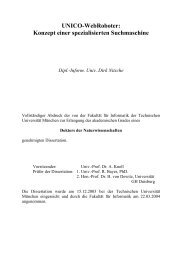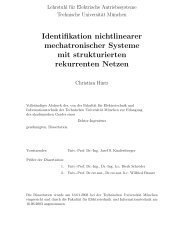Topologically Defined Neuronal Networks Controlled by Silicon Chips
Topologically Defined Neuronal Networks Controlled by Silicon Chips
Topologically Defined Neuronal Networks Controlled by Silicon Chips
Create successful ePaper yourself
Turn your PDF publications into a flip-book with our unique Google optimized e-Paper software.
CHAPTER 2. NETWORKS OF DEFINED TOPOGRAPHY<br />
Figure 2.20: Left: Synaptically coupled cell pair on a UV-patterned glass substrate. No scale bar is<br />
available, somata have an estimated diameter of about 30µm. Right: Electrophysiological recordings<br />
with impaled microelectrodes. Top row, cell 1 is presynaptic, bottom row, cell 2 is presynaptic. Top<br />
traces, injection of a depolarizing current of 0,15nA; bottom traces, hyperpolarizing current injection<br />
with -0.15nA. Coupling coefficients are displayed for each direction of signal transfer and the synapse<br />
conductance is shown. The transients were corrected for electrode artifacts.<br />
cluster neurons need not necessarily establish synaptic connections in vitro, especially if they have not<br />
been connected in vivo.<br />
Studies with Helisoma neurons indicate the importance of both neurons being in a state of active growth<br />
to form a synapse [41]. Time lapse photographs of developing networks suggest a similar situation in<br />
the case of Lymnaea stagnalis [79].<br />
A third, yet very speculative reason might be a negative influence of the SU-8 topographic structures<br />
on synapse formation. It is supported <strong>by</strong> studies with UV-patterned substrates, where 73% (n=15) of<br />
the pairs were coupled, as compared to just 60% here. However, due to the small number of networks<br />
tested, the statistical relevance is low. The difference could also arise from a more careful selection of<br />
neurons, for example.<br />
Electrophysiological recordings of coupled cell pairs<br />
The following paragraph discusses signal transfer between coupled neuron pairs on the basis of three<br />
example networks.<br />
Fig. 2.20 shows two nerve cells growing neurites collinearly on a track of intact conditioning factors<br />
on a UV-patterned substrate. As illustrated <strong>by</strong> the electrophysiological recordings on the right, a<br />
functional synaptic connection has been formed. Transients can not be assigned to a specific cell in<br />
the micrograph, because they were not labelled during the experiment. This is of little relevance to the<br />
following discussion, however.<br />
Injecting a hyperpolarizing current of -0.15nA into cell 1 hyperpolarized its membrane potential <strong>by</strong><br />
about 25mV. The signal passed via the synapse and also hyperpolarized the postsynaptic cell 2 <strong>by</strong><br />
10mV. Determination of the coupling coefficient according to eq. 2.24 yields k1,2 = 0.4 (the actual<br />
value given in the diagram is averaged over several measurements with currents of different amplitude<br />
injected). Switching the roles of the two neurons, such that cell 2 was now presynaptic and cell<br />
1 postsynaptic, resulted in similar recordings, but with a somewhat smaller coupling coefficient. The<br />
difference in values k1,2 and k2,1 is attributed to the varying soma conductance of the respective postsynaptic<br />
neuron as described <strong>by</strong> eq. 2.24.<br />
The behavior found with this cell pair, i.e. signal transfer in both directions across the synaptic connection<br />
and transmission of hyperpolarizing currents, is characteristic for electrical synapses. They were<br />
34


